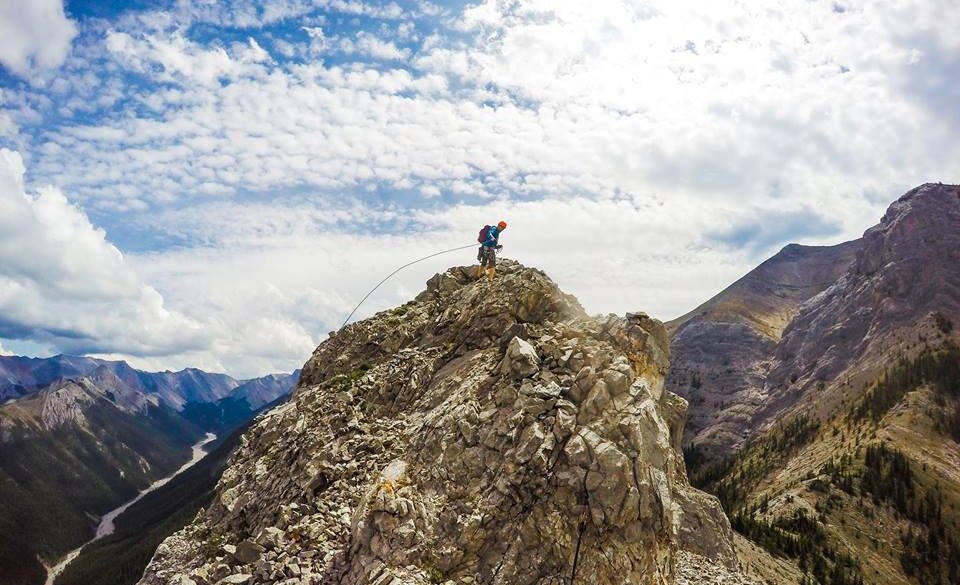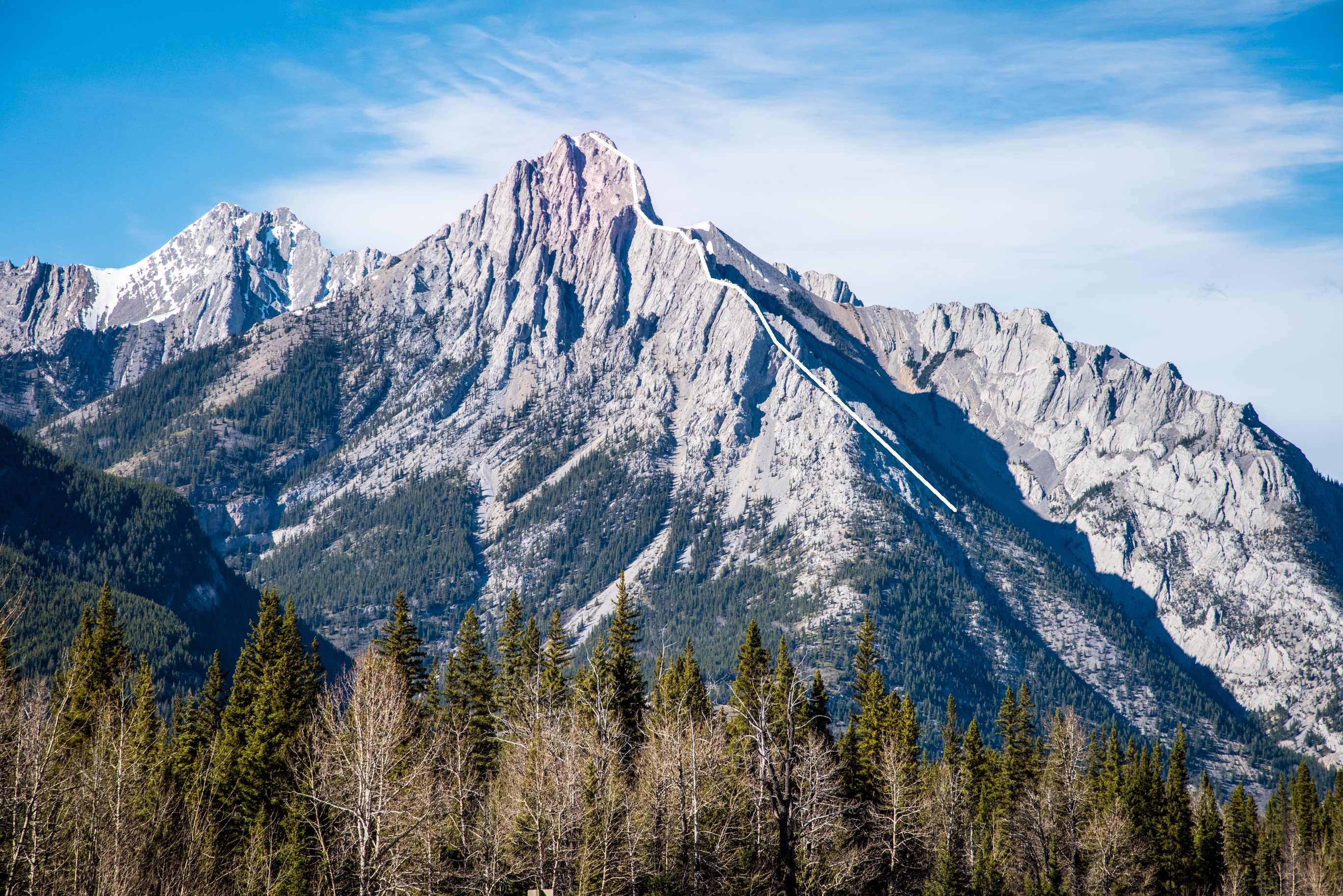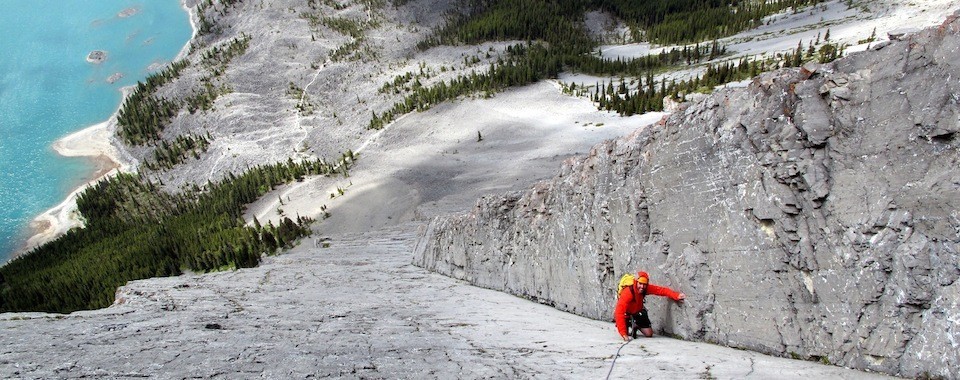Classic Kananaskis Multi-Pitch Rock Climbs
Along the Bighorn Highway west of Calgary are some amazing one-day adventures graded from 5.5 to 5.8

The Bighorn Highway has long been an Alberta go-to climbing destination. It’s the name given to the 66-kilometre Highway 40 in Kananaskis Country that runs north to south from Barrier Mountain to King Creek. Kananaskis Country is a system of 10 provincial parks in the front ranges of the Rockies and is home to hundreds of rock, alpine and ice routes. Along the Bighorn Highway are four multi-pitch rock routes that vary from very popular to relatively unknown, but have all enjoyed some time in the spotlight over the past half-a-century.
Wasootch Tower North Ridge Direct: Wasootch Creek is known for its single-pitch slab climbing and the majority of the routes are 5.9 and 5.10. Past the slabs, however, is the esthetic Wasootch Tower. The North Ridge has seven pitches that lead you to a climber’s summit, which means the only way to the top is by a technical route and the only way off is by rappelling. The tower was first climbed in 1952 by the legendary Hans Gmoser up the two-pitch south face.
The North Ridge was first climbed in June 1968 by Charlie Locke, John Martin, G.Rathbone and S.Slymon. The route was popular for guides and Alpine Club of Canada events and was graded 5.7R. The route weaved and meandered up the north face and north ridge. A direct route was later climbed that took advantage of the fine climbing on the ridge proper. There are a number of old pitons on the direct route, but over a decade ago bolts were added. The original 5.5 grade was bumped up to 5.7R to better represent the down-sloping, loose cruxes and run-out nature of most pitches. To descend, down-climb the south ridge to find rap bolts. Rappel 15 metres to the next anchor and one more 25-metre rappel to a ledge with some down climbing to the trail. A 70-metre rope will get you to the trail.

Mouth Lorette’s South Ridge: After first being climbed in the 1950s, Mount Lorette’s South Ridge became a popular moderate alpine rock outing. The obvious ridge is close to the road and has mostly easy climbing. A number of climbers who have attempted soloing the route have fallen and died. Despite the 5.4 grade, there are a number of exposed sections and while the route has solid rock throughout, loose blocks are common. After a cold river crossing next to your car, another approach is from Kananaskis Village and does not include a river crossing but takes much longer, you start up the steep slopes beneath the ridge.
This is an 1,200-metre day from valley to summit, so you have your work cut out for you. The first crux is a narrow chimney that gets you to the ridge. After some moderate ridge climbing, you reach the main crux. A landmark choc stone in a gap between two walls has fallen out sometime in the past 10 years. You must climb down one side and make an airy step across the gap. On the other side, stay lower than the ridge to pass loose rock. Stay low until it is obvious to re-gain it. Another 250 metres of straightforward climbing brings you to the last crux, a short wall with good holds. From the summit, climb down the north ridge to a washed out bowl, which you can descend, or climb farther to a scree slope.

The Fold on Mount Kidd: In 1985 Rudi Kranabitter and Ferdl Taxbock made the first ascent of this now-classic route and unlike many routes in the Rockies that see annual retro-fitting, not much has changed on The Fold. The route follows one of the most prominent features on the Bighorn highway, an unmistakable arete-like buttress on the south side of the south summit of Mount Kidd. The rock is excellent on most pitches and there is good gear to protect the cruxes. It is one of the most adventurous moderate rock routes in the Rockies.
Some climbers compare The Fold to Direttissima on Yamnuska, but The Fold is technically much easier for the 5.8 grade. The cruxes are on pitches five and 10 and most of the climbing is around 5.6 and 5.7. Above the 11-pitch route are two options, one is to make the two rappels down to a lower scree slope and descent and the other is to continue up two more pitches to a large ledge. From here, you can rappel back down or continue the upper buttress, which is graded 5.9R. Read about Colin Haley and Raphael Slawinski’s climb of The Fold and upper buttress here. Full pitch breakdown here.

Joy on Mount Indefatigable: Joy is an obvious right-facing dihedral that ramps up a slab on the south face of Mount Indefatigable above Upper Kananaskis Lake. The 600-metre route was first climbed 1995 by Peter Gatzsch, Urs Kallen and Geoff Powter. The grade varies on what line you take. One party reported they found a 5.5 line up the slab right of the dihedral, but most report 5.6 climbing. There is no other route like it in the Rockies and the views are spectacular. Despite its popularity, there are large loose rocks on a number of the low-angle ledges, but they’re easily avoided.
There has never been a pitch-by-pitch topo of the route because getting lost would be hard. Just follow the easier line, zig-zagging back and forth from the slab to the corner. There is almost no fixed gear and you have to build your own anchors. The crack is easy to protect with mostly 0.3- to 0.75-sized cams, but the odd number one and two are handy in a few spots. Joy has been called one of Canada’s best 5.6 routes. A route called The Shining Path 5.7R climbs the slab and dihedral left of Joy. More on Joy and the descent here.



